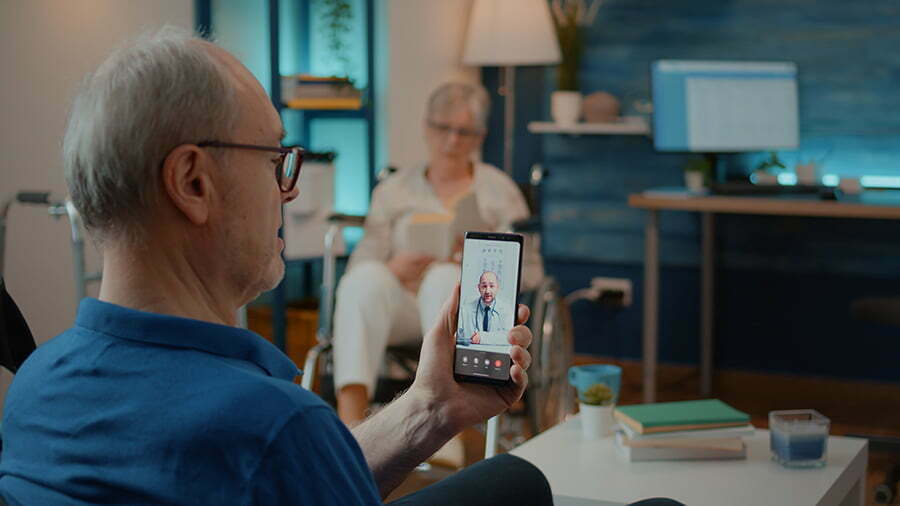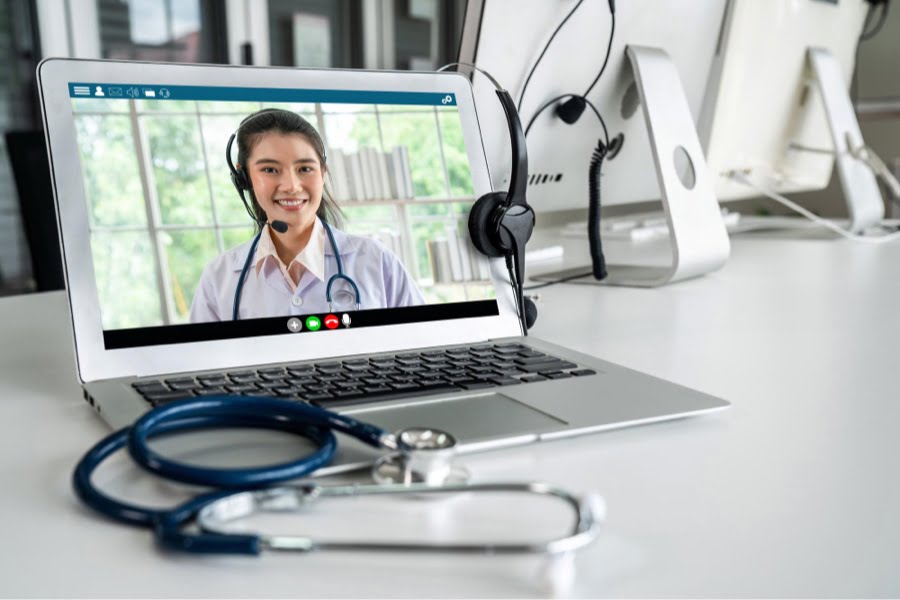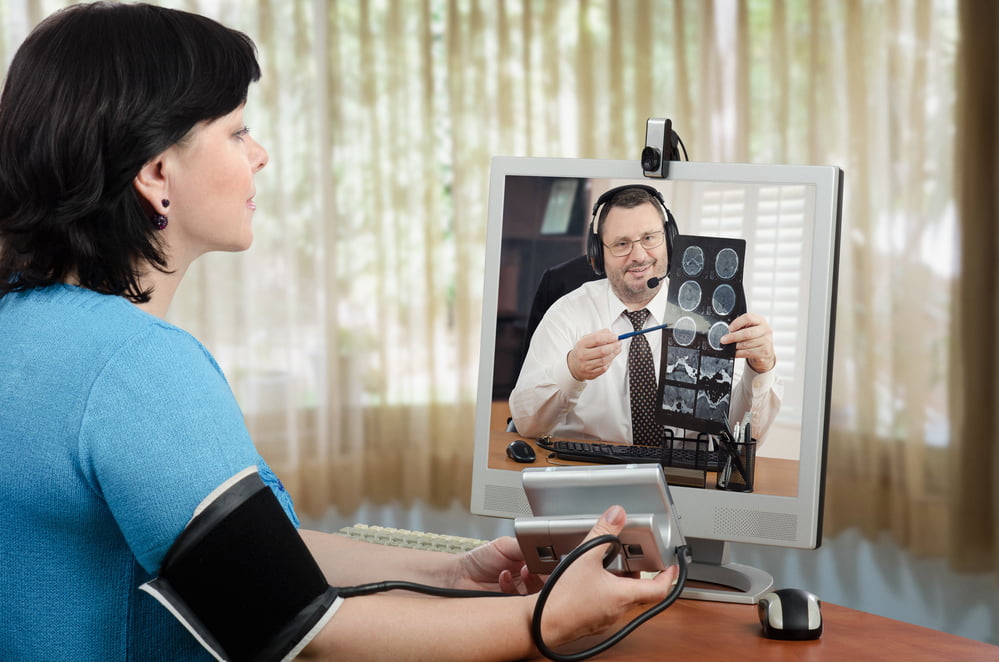Here’s everything you need to know about moonlighting in telemedicine as a medical resident. Read on!
Telemedicine is revolutionizing the way healthcare is delivered, and medical residents are no exception. With the rise of remote consultations and patient monitoring, telemedicine moonlighting presents an excellent opportunity for medical residents to gain additional experience and supplement their income while completing their residency.
During residency, medical professionals can participate in telemedicine-based moonlighting by providing services in their free time through various channels, such as working as a locum tenens or offering remote consultation services.
By engaging in telemedicine moonlighting, medical residents are not only able to enhance their clinical skills, but also to establish connections and build networks within the medical community.
With diverse opportunities available, telemedicine moonlighting is a valuable experience for residents looking to advance their careers and improve their work-life balance.
Telemedicine Moonlighting for Residents

Telemedicine is a rapidly growing field that utilizes technology to provide medical care from a distance. It allows healthcare providers to diagnose, treat, and monitor patients remotely, increasing access to care, particularly for those in remote locations or with limited mobility.
Telemedicine encompasses various modalities such as video consultations, telephone calls, and remote monitoring devices.
Moonlighting in Residency
In the context of medical residency, moonlighting refers to working as a doctor outside of the regular residency program. Two types of moonlighting often encountered are:
- Internal moonlighting: Taking on extra shifts at the hospital where the resident is currently training.
- External moonlighting: Working at a separate healthcare facility or engaging in telemedicine.
Telemedicine moonlighting has become an attractive option for residents who want to supplement their income and gain additional clinical experience. Some benefits of telemedicine moonlighting include:
- Flexible scheduling: Residents can balance their demanding residency schedules with telemedicine shifts by working during weekends or evenings.
- Expanding clinical knowledge: Telemedicine encounters expose residents to diverse patient populations and medical conditions.
- Enhancing communication skills: Telemedicine communication often requires clear explanations and active listening, improving the resident’s overall communication abilities.
An example of telemedicine moonlighting is telemedicine-based external moonlighting during family medicine residency, where residents offer virtual consultations in primary care settings.
However, it is important for residents to consider the potential disadvantages and risks associated with moonlighting in telemedicine:
- Time management challenges: Extended work hours may impact the resident’s ability to fulfill their regular residency duties and maintain a healthy work-life balance.
- Licensing and malpractice insurance: Residents must ensure they have the appropriate licensure and malpractice coverage specific to their telemedicine work.
In conclusion, telemedicine moonlighting can provide valuable opportunities for residents to expand their skills and knowledge while increasing patient care access.
By carefully considering the benefits and challenges associated with telemedicine moonlighting, residents can decide whether this option is suitable for their career trajectory.
Benefits of Telemedicine Moonlighting

Additional Income
One of the primary benefits of telemedicine moonlighting for residents is the opportunity to earn side income by working extra shifts or during weekends. This extra income allows them to improve their financial situation during residency, which typically pays between $70,000 and $80,000 a year.
Managing Medical Debt
Medical debt can be a significant burden for residents, as they often carry sizable loans from their education. Telemedicine moonlighting can be a useful strategy for alleviating financial pressure and gradually repaying student loans.
Enhanced Training and Experience
Telemedicine moonlighting provides residents with valuable experience and training in different healthcare settings. This additional experience helps them build confidence and expand their knowledge in various areas of medicine. They can also explore different specialties, giving them more options for their future careers.
Flexible Hours
One of the advantages of telemedicine is its flexibility, which allows residents to work extra shifts that fit around their primary residency schedule. This flexibility is especially important for those who want to maintain a healthy work-life balance during their demanding residency training.
Challenges in Telemedicine Moonlighting

Balancing Work and Residency
One challenge residents may face while moonlighting in telemedicine is striking a balance between their primary residency duties and additional telemedicine work. Telemedicine can provide residents with the opportunity for flexibility in maintaining their regular learning schedules, but it is important for them to establish boundaries to ensure that their primary training is not compromised. Managing time effectively and knowing when to prioritize certain tasks is crucial in navigating the demands of both roles.
Potential Burnout
The risk of burnout should not be underestimated when residents choose to moonlight in telemedicine. Working long hours in the medical field and the added responsibility of moonlighting can contribute to mental and physical fatigue.
Residents need to pay attention to their well-being and ensure that they do not over-extend themselves, as it can have a negative impact on their personal and professional lives.
Insurance and Malpractice Concerns
Moonlighting in telemedicine comes with its own set of insurance and malpractice concerns. Residents must be aware of the requirements and potential risks involved in practicing telemedicine outside their primary residency program.
This may include ensuring proper coverage for malpractice claims and understanding the telemedicine-specific regulations that govern their practice.
ACGME and Contractual Constraints
Residents engaging in telemedicine moonlighting must also be cautious of any ACGME restrictions or contractual constraints within their residency program. It is essential for them to be knowledgeable about any limitations that their program may have in place regarding moonlighting and ensure compliance with these stipulations. Failure to adhere to these constraints may result in disciplinary action or even dismissal from the residency program.
Telemedicine Opportunities for Medical Residents

Telemedicine Services
In today’s fast-paced world, telemedicine has gained popularity as a convenient and effective healthcare option. Medical residents can benefit from telehealth moonlighting experiences by expanding their clinical skills and knowledge. By taking on telemedicine jobs, residents can assist in providing virtual care, including remote consultation, diagnosis, and treatment to patients.
Emergency Medicine Exposure
Medical residents with an interest in emergency medicine can explore moonlighting opportunities in this field. Through these roles, they can gain valuable exposure to urgent and emergent clinical situations. By embracing telemedicine services, residents can be involved in virtual triaging, determining the course of action, and collaborating with other healthcare professionals in emergency medical situations.
Urgent Care Settings
Moonlighting in urgent care settings is another excellent opportunity for residents. By working in these environments, medical residents can manage acute illnesses and injuries effectively, refining their diagnostic and clinical skills.
Telemedicine integrates seamlessly into urgent care by allowing residents to treat and follow up with patients remotely, thereby improving the continuum of care.
Working with Insurance Companies
As residents gain experience in telemedicine, they may also encounter opportunities to work with insurance companies. By providing telehealth services, they can help evaluate cases, determine coverage eligibility, and contribute to the optimal allocation of healthcare resources.
In conclusion, telemedicine offers medical residents numerous moonlighting opportunities. By engaging in various aspects of virtual health care, such as emergency medicine and urgent care settings, residents can enhance their clinical skills and increase their exposure to diverse medical scenarios.
Seeking Moonlighting Opportunities

Exploring Organizations
Medical residents interested in telemedicine moonlighting should begin by researching various organizations offering such opportunities. It’s essential to find organizations that provide lucrative compensation and the flexibility to balance their residency training and moonlighting roles effectively.
There are multiple telemedicine companies that hire residents for part-time positions. To get started, it’s a good idea to consult online forums, seek advice from fellow residents, and reach out to program directors (PDs) familiar with this part of the medical field.
Board Certification Requirements
Although it’s not compulsory, some organizations may prefer medical residents with board certification or board eligibility. Before applying for telemedicine moonlighting jobs, it’s advisable to clarify any specific certification requirements with the hiring organization.
Also, residents should ensure they adhere to their own residency program’s guidelines, as some programs may have policies regarding moonlighting activities.
Creating Professional Relationships
Establishing professional relationships within the telemedicine industry is crucial for residents pursuing moonlighting opportunities.
By attending conferences, networking events, and engaging with industry professionals, residents can gain valuable insights into the best practices and potential job leads in this growing field.
Additionally, residents should consider discussing moonlighting plans with their PD, who may have contacts in relevant organizations and a better understanding of the process.
In summary, telemedicine moonlighting can be a fulfilling and profitable venture for medical residents. However, it’s essential to research organizations thoroughly, ensure board certification requirements are met, and establish professional relationships in the field to maximize success.
Related reading:



